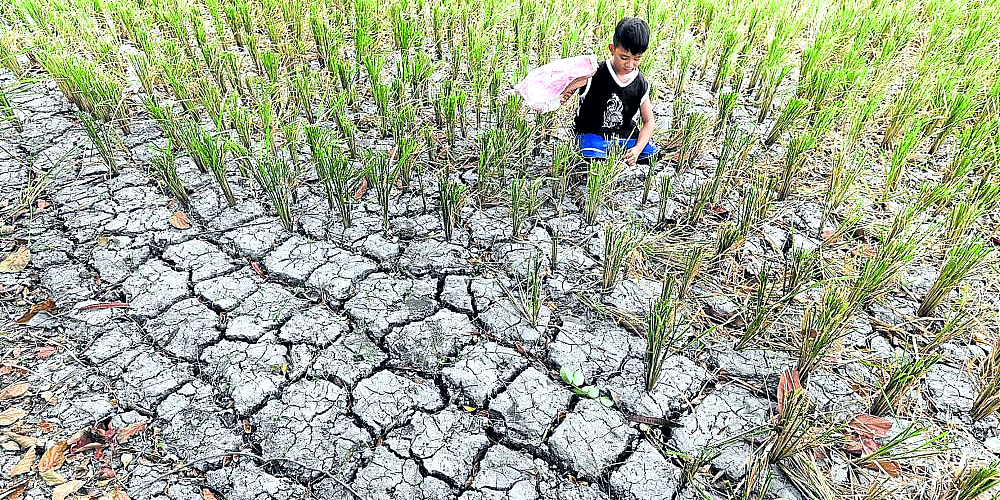
This year could be hotter under El Niño’s influence than the record-shattering 2023, the United Nations warned, as it urged drastic emissions cuts to combat climate change.
The UN’s World Meteorological Organisation said new monthly temperature records were set every month between June and December, and the pattern is likely to continue due to the warming El Niño weather phenomenon.
The US National Oceanic and Atmospheric Administration (NOAA) predicted there is a one in three chance that 2024 will be warmer than 2023 — and a 99 percent certainty that 2024 will rank among the five warmest years ever.
NASA climatologist Gavin Schmidt, director of the NASA Goddard Institute for Space Studies, estimated the odds were even higher.
“I put it at about 50-50: 50 percent chance it’ll be warmer, 50 percent chance it will be slightly cooler,” he told AFP, adding there were hints of “mysterious” changes to Earth’s climate systems, that would nonetheless require more data to confirm or refute.
The UN’s WMO weather and climate agency said July and August last year were the two hottest months ever recorded, as it officially confirmed 2023 had been the warmest year on record “by a huge margin.”
The WMO said the 2023 annual average global temperature was 1.45 degrees Celsius above pre-industrial levels (1850-1900).
The 2015 Paris climate accords aimed to limit global warming to well below two degrees Celsius above pre-industrial levels — and 1.5 °C if possible.
The WMO’s new secretary-general Celeste Saulo warned that El Niño, which emerged mid-2023, is likely to turn up the heat even further in 2024.
The naturally-occurring climate pattern, typically associated with increased heat worldwide, usually increases global temperatures in the year after it develops.
“The shift from cooling La Niña to warming El Niño by the middle of 2023 is clearly reflected in the rise in temperature,” she said.
“Given that El Niño usually has the biggest impact on global temperatures after it peaks, 2024 could be even hotter.”
Humanity’s ‘biggest challenge’
NOAA said the 2023 global surface temperature was 1.18 °C above the 20th-century average, and was hotter than the next warmest year, 2016, by a record-setting margin of 0.15 °C.
The Arctic, northern North America, central Asia, the North Atlantic and the eastern tropical Pacific were particularly hotter, it said.
Saulo said climate change was now “the biggest challenge that humanity faces.”
A WMO report in November found that concentrations of the three main heat-trapping greenhouse gases — carbon dioxide, methane and nitrous oxide — reached record high levels in 2022, with preliminary data indicating that the levels continued to grow in 2023.
“Climate change is escalating — and this is unequivocally because of human activities,” said Saulo.
‘Catastrophic future’ awaits
UN Secretary-General Antonio Guterres said humanity’s actions were “scorching the Earth.”
“2023 was a mere preview of the catastrophic future that awaits if we don’t act now,” he said.
The WMO said that since the 1980s, each decade has been warmer than the previous one — while the warmest nine years on record had all been since 2015.
The EU’s Copernicus Climate Change Service issued its 2023 temperature findings on Tuesday, while NOAA and NASA released theirs simultaneously with the WMO on Friday.
The WMO consolidates figures from six major international datasets to provide an authoritative temperature assessment.
It said the 10-year average temperature from 2014 to 2023 was 1.20 °C above the pre-industrial average.
Even if Earth’s average surface temperature breaches the 1.5 °C mark in 2024, it does not mean the world has failed to meet the Paris Agreement target of capping global warming under that threshold.
That would occur only after several successive years above the 1.5 °C benchmark, and even then the 2015 treaty allows for the possibility of reducing Earth’s temperature after a period of “overshoot.”
ADVERTISEMENT
ADVERTISEMENT








































